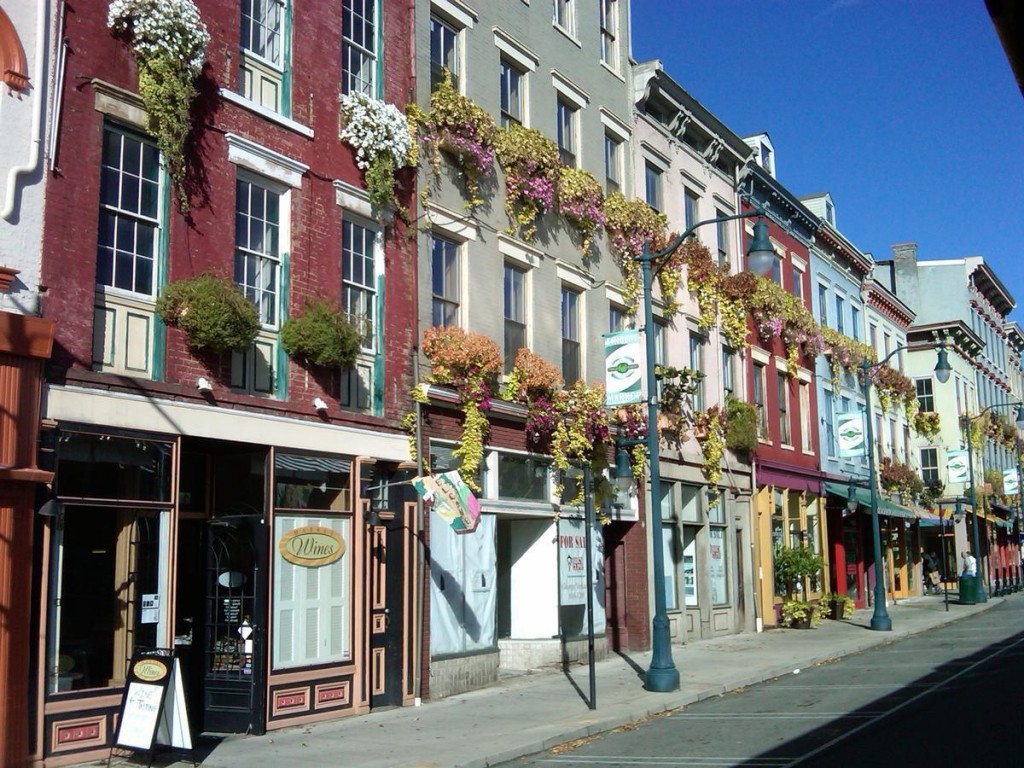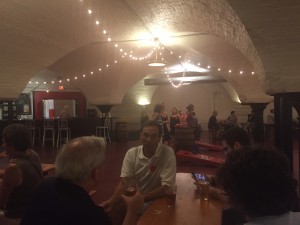After the plant tour and the Red’s game my parents, Uncle, Cousin, and I all took a tour of Over the Rhine in downtown Cincinnati. First we stopped at Holtman’s donuts–a local shop that has been the area since 1960. Needless to say they were both very pricey and very delicious. After that, we began our tour!
I never really put two and two together, but “Over the Rhine” literally means Over the River. Back when barge traffic was a large means of transportation in the mid 1800’s, the Rhine was used to transport materials from Northern Ohio and beyond. In this area of Cincinnati, a large German settlement established itself. When anyone wanted to get a good beer, or food to drink, people headed “Over the Rhine” to this ethnically riche area to get some authentic German beer and food.
The two main things that I was surprised to learn about the area were just how much the German way of life depended on beer in the area–and not in a vulgar sense. In Over the Rhine, safe drinking water was hard to come by. With many breweries creating beer, however, a sustainable clean source of liquid was available. Beer itself is also a pretty low proof alcoholic drink. Workers were able to drink and stay hydrated throughout the day while still maintaining the ability to carry out the daily duties their jobs required. Beer also served as a catalyst for restaurants in the area as well.
Often times restaurants would provide a free buffet to those who had a running tab at their location. With a large influx of immigrants into the area, it wasn’t unnatural for family’s to head down to one of the many restaurants, order a few beers, and then eat at the buffet for dinner. The cheap price of beer made the buffet easily accessible to families, while the breweries were able to retain customers and gradually promote their products. Needless to say at it’s height, over the Rhine had over 160 different craft breweries operating in the area.
However, many familiar with this area know of its current past. Unfortunately during the early 1920’s prohibition came into effect. This greatly disturbed the area who over half of the residences work was somehow being tied to the beer produced there–whether it be performing in the theater, cooking food, or making the barrels for beer to be aged in. As the law took its effect many found themselves without a job, and gradually many moved out of the area. Even though Prohibition was later repealed in 1933 with the ratification of the 21st Amendment, 13 years without business was able to dry up many of the breweries reserves. This, coupled with the falling apart of the big political machine, and later the Anti-German sediment of World War 2 were enough to indefinitely cripple the area.
Going into this tour I had no expectations. I didn’t know anything about the area… not even that it used to be a large German settlement of Cincinnati. It was interesting to learn about how their  lifestyle was so actively changed when a key part of their societal structure was removed by the government. There is good news though. Over the past couple of years the city, and many non-profit organizations have been working together to restore this area. It is the biggest historical location in the United States–with many buildings needing structural rework and re-bricking. A lot of money is going to not only building up new business, but maintaining the members of old families who live there. It was an interesting experience for sure!
lifestyle was so actively changed when a key part of their societal structure was removed by the government. There is good news though. Over the past couple of years the city, and many non-profit organizations have been working together to restore this area. It is the biggest historical location in the United States–with many buildings needing structural rework and re-bricking. A lot of money is going to not only building up new business, but maintaining the members of old families who live there. It was an interesting experience for sure!
